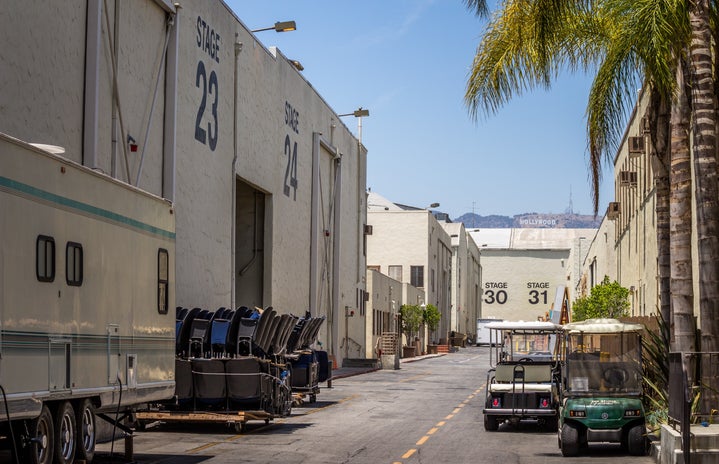In anticipation of the new Beauty and the Beast movie, coming out on March 17th, let’s revisit the classic 1991 version….
Beauty and the Beast is my favorite Disney movie of all time. I would argue that it is the greatest Disney movie made to date. With catchy songs, breathtaking scenery, and a beautiful story, this is without question a great film. Those who knew me in 6th grade might remember the days when I could quote the entire script from memory. I know literally everything about this movie. In 2009 alone, I saw the musical production 7 times. This was a time of unparalleled obsession in my life, and no other film has ever matched my level of commitment to Beauty and the Beast. For your enjoyment, I have included some embarrassing pictures chronicling later manifestations of this deep love.
With all of that being said, there are some real problems with this movie. I feel that since I have established my undying appreciation for this movie, I am qualified to lovingly critique it. So settle in, because we are going to go over some of the very real ways in which this movie is problematic:
1) Stockholm Syndrome: this is a relatively well-known criticism of Beauty and the Beast. The movie narrates an almost perfect representation of Stockholm Syndrome, where a captive (often a female) is isolated from family and friends and becomes disillusioned about the captor (often a male), and falls in love. This is very apparent in that Belle is separated from her father and falls in love with the Beast, who is literally holding her prisoner. Furthermore, the fact that once Belle is free she returns to the Beast willingly (both when she runs away and gets attacked by wolves, and again when she is allowed to leave and goes to her father) does not at all negate her Stockholm Syndrome. Rather, it is very common for such a situation to occur–this is the same thing we see with individuals who have been in prison. Once you become accustomed to an abusive situation, it is very hard to leave and try to readjust to life on the “outside.” Belle and the Beast’s relationship at the start is certainly not healthy, since she is his prisoner, and it is hard to get past that.
2) Bestiality: Okay, I get that this does not really apply. The Beast is not actually an animal–he can talk, after all–and the point of the movie is that love can transform us and appearances should not matter. I get it. But seriously, Belle falls in love with a buffalo. That is just weird. Now, don’t get me wrong, there are a TON of Disney movies with animal couples–especially in the 50s, 60s, and 70s, which were dominated by animal movies like Robin Hood, AristoCats, 101 Dalmatians, Lady and the Tramp, etc. But these couples are BOTH animals, so it’s fine. Not so in Beauty and the Beast–as the title suggests, something here is a little wrong.
3) Slavery: The enchanted objects of the castle are totally slaves. They clearly do not get paid, and cannot leave, and have to serve the Beast (and his guests). Do they enjoy it? I mean, from Be Our Guest, yes, but that does not distract from the fact that the poor enchanted objects have no choice in this. When the Beast was punished, everyone working there was punished, and that is just not fair. The Beast treats them horribly–for example, yelling at them when they let Belle’s father inside the castle–and there is nothing they can do. The movie does make it clear that Beast’s treatment of the enchanted objects is not okay, but it’s still important to keep in mind that they are the definition of slaves.
4) Age Discrepancies: This is complicated. According to the movie, the castle has been under the spell for ten years, and the Beast is twenty-one. Thus, he was only eleven when he was transformed into the Beast–and really, how is that fair? What eleven year-old was going to let a creepy old lady into his house? Stranger Danger clearly states that he should not have let the enchantress into his house no matter what she looked like. Also, where were his parents? Why did they not raise him better? What happened to them? Okay, but the problem here is that the Beast clearly ages. At the beginning, he is eleven, and at the end, he is twenty-one. But do the enchanted objects get older too? It seems like they do not, since Chip appears to not be ten years old yet…and Mrs. Potts could not have had him during the spell, could she? I feel like there is just no way for a teapot to produce a teacup, which means that the servants have not been aging like the Beast has. So after the spell, Chip has been “alive” for about 16 years, but is stuck in a roughly six-year old’s body. Same for all the other servants–once they get transformed back into humans, their bodies are ten years younger than they actually are. This is not necessarily an issue, but it is worth addressing because it is a weird thing that happens that is mostly overlooked.
This is not at all an exhaustive list. There are lots of other issues and general plot holes with this movie. But I feel like what I’ve listed here are the big ones. In closing, let’s take a second to remember the achievements of this film: Belle is the fifth Disney princess, and she sets an example of how to be a strong, intelligent woman. She does not fit in with her peers, but is able to maintain her originality and creativity. She does not want an egotistical man like Gaston, and really, never seeks out a relationship whatsoever. She is a wonderful role model for boys and girls alike on being smart and independent.
In 1992, Beauty and the Beast became the first animated movie to ever be nominated for the Academy Award for Best Picture (it lost unfortunately, to Silence of the Lambs). It did, however, win the Academy Award for Best Original Music Score (by music genius Alan Menken), as well as two Golden Globes: Best Motion Picture- Musical or Comedy, and Best Original Score
Again, Beauty and the Beast is above all a story about the transformative power of love. Belle falls in love with the Beast not because of the way he looks, but because of who he is. It is Belle’s kindness that brings out the best in the Beast, and he in turn recognizes Belle’s love for books (giving her an entire library, hello), and eventually letting her go to her father. The love that develops between Belle and the Beast is one of the most gradual of any Disney princess film, and certainly was the most developed relationship when it was released. Prior to Beauty and the Beast, the other Disney princesses (Snow White, Cinderella, Aurora, and Ariel) had all rushed into very quick relationships, at best lasting a few days each. Belle, however, makes it at the very least through an entire winter before her and the Beast fall in love. When she is imprisoned, it is roughly fall, since the leaves are changing, then the story goes through the winter, and when the spell is broken it is spring. So, really, the relationship develops over the course of about 4 or 5 months, which, for a Disney princess, was unprecedented.
So, those are my thoughts. Make sure you go see the new release of Beauty and the Beast, starring Emma Watson and Dan Stevens, and check back next week for my thoughts on the new LeFou coming out as a Disney’s first gay character!


